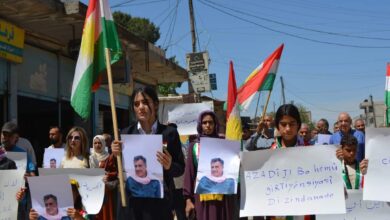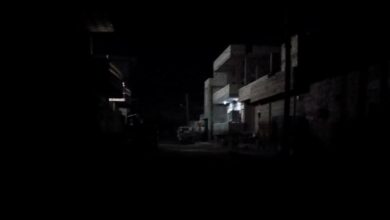
What is the Khorasan Group?
Shortly before the United States and its Arab allies launched air strikes on Islamic State (IS) positions across Syria on Tuesday, cruise missiles launched from US warships in the Gulf and Red Sea struck two areas west of the city of Aleppo.
The targets were not leaders of IS, the jihadist group that has declared the creation of a caliphate in the large swathes of Syria and Iraq under its control, but seasoned al-Qaeda operatives who the US says had established a safe haven to plot attacks on the West.
The missiles targeted training camps, a bomb factory, a communication building, and command-and-control facilities belonging to whatWashington calls “the Khorasan Group”.
Until then, very little information about the shadowy organisation had been made public, although American politicians had been given classified briefings.
“This is a group that has been known to us for two years,” US Attorney General Eric Holder told Yahoo News.
“We hit them last night out of a concern that they were getting close to an execution date of some of the plans that we have seen.”
‘Low profile’
The Khorasan Group – a name apparently coined by the US – is believed to be made up of about 50 veteran militants from Afghanistan and Pakistan, which jihadists refer to as Khorasan, as well as North Africa and Chechnya.
US officials said they had been sent to Syria by al-Qaeda’s leader, Ayman al-Zawahiri, not to fight the government of President Bashar al-Assad but to “develop external attacks, construct and test improvised explosive devices and recruit Westerners to conduct operations”.
The militants are thought to have embedded themselves within al-Qaeda’s local affiliate, the al-Nusra Front, and obtained land and buildings in its strongholds.
Several al-Qaeda veterans – including al-Nusra’s spokesman Abu Firas al-Suri and its top military commander, Abu Humam al-Suri – moved to Syria over the past year and appeared in al-Nusra propaganda.
The Khorasan cell’s alleged leader, Muhsin al-Fadhli, was also believed to have arrived last year, but he kept a low profile.
The 33-year-old Kuwaiti was a confidante of the late Osama bin Laden and one of the few al-Qaeda operatives to receive advanced warning of the 11 September 2001 attacks, according to the US.
In 2005, the US treasury department said Fadhli was based in the Gulf and had been providing support to al-Qaeda militants fighting US-led forces in Iraq under Abu Musab al-Zarqawi.
Seven years later, the state department offered a $7m reward for information that led to the capture or killing of Fadhli, saying he had become the leader of al-Qaeda’s network in Iran and was responsible for the movement of money and fighters for its operations in the region.
Despite his senior role, analysts have expressed doubts about US assertions that Fadhli subsequently assumed the leadership of the Khorasan Group. Mustafa Alani of the Dubai-based Gulf Research Centresaid he was “more a preacher than a commander”.
‘Major attacks’
US officials were hopeful that social media reports that Fadhli was among those killed in the recent missile strikes were true, but cautioned that the group would remain a threat.
“His loss would be significant, but as we’ve seen before, any decapitation is only a short-term gain. The hydra will grow another head,” Congressman Adam Schiff, a member of the House Intelligence Committee, told the New York Times.
Classified US intelligence assessments said the Khorasan Group was collaborating with the Yemen-based al-Qaeda in the Arabian Peninsula (AQAP) to test ways to get explosives past airport security, according to the Associated Press.
AQAP’s Saudi bomb-maker, Ibrahim al-Asiri, is believed to have built the device that Nigerian Umar Farouk Abdulmutallab concealed in his underwear and tried to detonate in an aircraft over Detroit in 2009.
US officials say the intelligence that Asiri might be helping the Khorasan Group was the reason the Transportation Security Administration’sdecided in July to ban uncharged mobile phones and laptops from flights to the US originating in Europe and the Middle East.
By September, intelligence reports indicated that the Khorasan Group was “in the final stages of plans to execute major attacks”, Pentagon spokesman Lt-Gen William Mayville said.
Although it was not clear when, where or how the militants intended to strike, one US report said they were planning to build an bomb that would be difficult to detect by lacing non-metallic objects like toothpaste tubes and clothes with explosives.
The US Director of National Intelligence, James Clapper, told a recent intelligence gathering that “in terms of threat to the homeland, Khorasan may pose as much of a danger as the Islamic State”.
Mr Holder said strikes on the Khorasan Group would “probably continue until we are at a stage where we think we have degraded their ability to get at our allies or to the homeland”.
BBC




